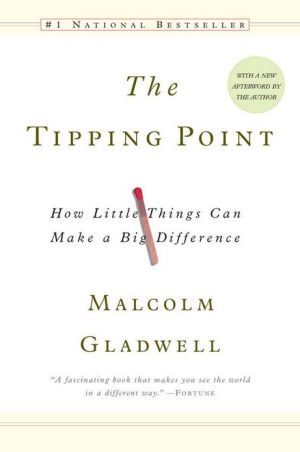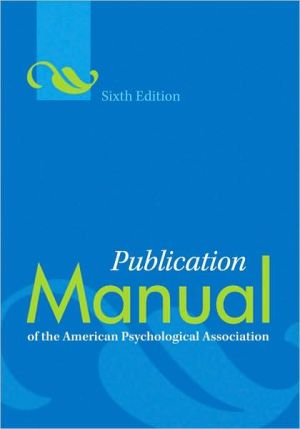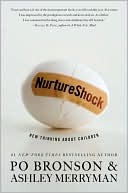Publication Manual of the American Psychological Association
**\ Please note:\ Some errors occurred in the first printing of the sixth edition of the Publication Manual.\ \ With millions of copies sold, the Publication Manual of the American Psychological Association is the style manual of choice for writers, editors, students, educators, and professionals in psychology, sociology, business, economics, nursing, social work, and justice administration, and other disciplines in which effective communication with words and data is fundamental.\ In...
Search in google:
With millions of copies sold, the Publication Manual of the American Psychological Association is the style manual of choice for writers, editors, students, educators, and professionals in psychology, sociology, business, economics, nursing, social work, and justice administration, and other disciplines in which effective communication with words and data is fundamental.In addition to providing clear guidance on grammar, the mechanics of writing, and APA style, the Publication Manual offers an authoritative and easy-to-use reference and citation system and comprehensive coverage of the treatment of numbers, metrication, statistical and mathematical data, tables, and figures for use in writing, reports, or presentations.The latest guidelines and examples for referencing electronic and online sourcesNew and revised guidelines for submitting papers electronicallyImproved guidelines for avoiding plagiarismSimplified formatting guidelines for writers using up-to-date word-processing softwareAll new guidelines for presenting case studiesImproved guidelines for the construction of tablesUpdates on copyright and permissions issues for writersNew reference examples for audiovisual media and patentsAn expanded and improved index for quick and easy accessWriters, scholars, and professionals will also find: New guidelines on how to choose text, tables, or figures to present dataGuidelines for writing cover letters for submitting articles for publication, plus a sample letterExpanded guidelines on the retention of raw dataNew advice on establishing written agreements for the use of shared dataNew information onthe responsibilities of co-authorsNew and experienced readers alike will find the 5th Edition a complete resource for writing, presenting, or publishing with clarity and persuasiveness. Doody Review Services Reviewer:Nicholas Greco IV, MS, BCETS, CATSM(Abbott Laboratories)Description:This is a needed update of the Publication Manual of the American Psychological Association, which was last published in 2001. Purpose:The purpose is to provide the latest standards in publishing and new practices in information dissemination. Mainly, this latest edition has evolved with the technological landscape and placed the continuously evolving material on the web. There is new and expanded coverage of ethical issues, manuscript parts, statistics, electronic material, and the publication process. Audience:This is the only style manual for writers, editors, students, and educators in the behavioral and social sciences field. Features:While this edition expands on ethical and legal standards in the field, it also provides guidance on protecting one's intellectual property rights. How to write and prepare a manuscript, organize your work, reduce various biases, ensure standard grammar, display results, and credit sources are discussed in detail. Professors will appreciate the chapter on reference examples as this is an area in which students often need direction.Assessment:As the definitive source of APA style, this is a must have for everyone in the social and behavioral sciences field.
Preface\ In 1928 editors and business managers of anthropological and psychological journals met to discuss the form of journal manuscripts and to write instructions for their preparation. The report of this meeting, which was chaired by Madison Bentley and sponsored by the National Research Council, is the forerunner of this book. The report was published as a ven-page article in the February 1929 issue of the Psychological Bulletin, ournal of the American Psychological Association (APA). The group agreed that it would not dictate to authors; instead, it recommended a andard of procedures, to which exceptions would doubtless be necary, but to which reference might be made in cases of doubt" ("Inuctions," 1929, p. 57; see section 9.01 for references to the predecessors this edition of the Publication Manual).\ In the 70 years that followed, those "Instructions" were revised and anded a number of times. The first edition of the instructions under title of Publication Manual was actually a 60-page supplement to the Psychological Bulletin published in 1952.\ It was another 22 years before a new edition was published in 1974 with 136 pages. Publication of the 208-page third edition occurred in 1983, and the fourth edition of 368 pages rolled off the presses in 1994.\ Seven years have elapsed since the last edition, during which time great changes have occurred in the publishing world and in the technology b I authors, editors, and publishers. The fourth edition stood the of time well, but eventually there were more matters to be dealt with than could be easily accommodated on the APA Web site for updates. In 1999 the APA Publications and Communications Board authorized work to begin on this fifth edition of the Publication Manual.\ Leslie Dodson ably served as the project leader for the revision, and many APA members and staff contributed their time, energy, and expertise to the preparation and editing of this volume, Nlark Appelbaum and his colleagues on the Statistics Task Force (Leona S. Aiken, Joel R. Levin, Robert S. Rosen, and Howard Wainer) had a particularly difficult assignment. Although not always in agreement on the specifics, the task force did agree on the need to provide some additional assistance to authors in dealing with statistical representations in manuscripts. Lenore W. Harmon, the APA Chief Editorial Advisor, drew on her experience to work on the ethics and authorship sections and to chair the Task Force on the Publication of Case Material (with Janice Birk, Clara Hill, Ross Parke, and NVilliam Stiles). Kathleen Sheedy took aim at the moving target of electronic referencing and manuscript preparation. She will continue working with the APA Internet Services staff to keep the new APA Style NVeb site up to date with changes in this area as they occur, Susan Knapp and Demarie Jackson provided examples, text, and guidance along the way.\ There is a section in the foreword to the fourth edition that aptly characterizes the Publication Manual.\ The Publicationn Manual presents explicit style requirements but acknowledges that alternatives are sometimes necessary; authors should balance the rules of the Publication Manual with good judgment. Because the written language of psychology changes more slowly than psychology itself, the Publication Manual does not offer solutions for all stylistic problems. In that sense, it is a transitional document: Its style requirements are based on the existing scientific literature rather than imposed on the literature.\ Every edition of the Publication Manual has been intended to aid authors in the preparation of manuscripts. The 1929 guide could gently advise authors on style, because there were then only about 200 authors who published in the 4 existing APA Journals. Today, the editors of APA's 24 primary journals consider close to 6,000 manuscript submissions per year (of which approximately 1,400 reach print). Without APA style conventions, the time and effort required to review and edit manuscripts would prohibit timely and cost-effectivc publication and would make clear communication harder to achieve.\ The numbers are higher today, of course. There are now 27 APA primary journals. And at least a thousand other journals in psychology, the behavioral sciences, nursing, and personnel administration use the Publication Manual as their style guide. This standardization has greatly facilitated the communication of new ideas and research and simplified the tasks of publishers, editors, authors, and readers as well as enabled linkages of electronic files across articles and across publishers.\ As noted in the foreword to the fourth edition, however, this "standard" is not static. Our APA Web site devoted to the Publication Manual will provide updates and the latest information on changes in APA style and in APA policies and procedures that will affect authors as they preparc flicir manuscripts.
List of Tables, Table Examples, Figures, and Figure ExamplesPrefaceIntroduction1Content and Organization of a Manuscript3Quality of Content4Characteristics of Articles6Parts of a Manuscript10Quality of Presentation292Expressing Ideas and Reducing Bias in Language31Writing Style31Grammar40Guidelines to Reduce Bias in Language613APA Editorial Style77Punctuation78Spelling89Capitalization94Italics100Abbreviations103Headings and Series111Quotations117Numbers122Metrication130Statistical and Mathematical Copy136Tables147Figures176Footnotes and Notes202Appendixes205Reference Citations in Text2074Reference List2155Manuscript Preparation and Sample Papers to be Submitted for Publication283The Author's Responsibilities284General Instructions for Preparing the Paper Manuscript284Instructions for Typing the Parts of a Manuscript296Sample Paper and Outlines3056Material Other Than Journal Articles321Theses, Dissertations, and Student Papers321Converting the Dissertation Into a Journal Article326Material for Oral Presentation329Material Published in Abbreviated Form3307Manuscript Acceptance and Production331Transmitting the Accepted Manuscript for Production332Reviewing the Copyedited Manuscript335Proofreading336After the Article is Published3428Journals Program of the American Psychological Association345Policies Governing the Journals345Editorial Management of Manuscripts3579Bibliography363App. AChecklist for Manuscript Submission379App. BChecklist for Transmitting Accepted Manuscripts for Electronic Production385App. CEthical Standards for the Reporting and Publishing of Scientific Information387App. DReferences to Legal Materials397App. E: Sample Cover Letter411Index413
\ Reviewer: Nicholas Greco IV, MS, BCETS, CATSM(Abbott Laboratories)\ Description: "This is a needed update of the Publication Manual of the American Psychological Association, which was last published in 2001. "\ Purpose: The purpose is to provide the latest standards in publishing and new practices in information dissemination. Mainly, this latest edition has evolved with the technological landscape and placed the continuously evolving material on the web. There is new and expanded coverage of ethical issues, manuscript parts, statistics, electronic material, and the publication process. \ Audience: This is the only style manual for writers, editors, students, and educators in the behavioral and social sciences field. \ Features: While this edition expands on ethical and legal standards in the field, it also provides guidance on protecting one's intellectual property rights. How to write and prepare a manuscript, organize your work, reduce various biases, ensure standard grammar, display results, and credit sources are discussed in detail. Professors will appreciate the chapter on reference examples as this is an area in which students often need direction.\ Assessment: As the definitive source of APA style, this is a must have for everyone in the social and behavioral sciences field.\ \ \ \ \ Reviewer:Nicholas Greco IV, MS, BCETS, CATSM(Abbott Laboratories)\ Description:This is a needed update of the Publication Manual of the American Psychological Association, which was last published in 2001. \ Purpose:The purpose is to provide the latest standards in publishing and new practices in information dissemination. Mainly, this latest edition has evolved with the technological landscape and placed the continuously evolving material on the web. There is new and expanded coverage of ethical issues, manuscript parts, statistics, electronic material, and the publication process. \ Audience:This is the only style manual for writers, editors, students, and educators in the behavioral and social sciences field. \ Features:While this edition expands on ethical and legal standards in the field, it also provides guidance on protecting one's intellectual property rights. How to write and prepare a manuscript, organize your work, reduce various biases, ensure standard grammar, display results, and credit sources are discussed in detail. Professors will appreciate the chapter on reference examples as this is an area in which students often need direction.\ Assessment:As the definitive source of APA style, this is a must have for everyone in the social and behavioral sciences field.\ \







